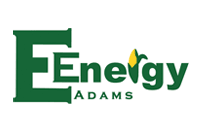Introduction
Efficiently managing Environmental, Health, and Safety (EHS) tasks is crucial for organizations to maintain compliance, drive operational excellence, and ensure the well-being of their workforce. However, manual task management processes can be time-consuming, prone to errors, and lack the necessary transparency and accountability. This is where EHS Task Management software comes into play. In this blog post, we will explore how EHS Task Management software improves efficiency and accountability in EHS processes by enabling task assignment, priority setting, deadline management, and reporting functionalities.
- Streamlined Task Assignment: EHS Task Management software simplifies the process of task assignment by providing a centralized platform for task allocation. Managers or supervisors can easily assign tasks to individuals or teams, ensuring clear ownership and responsibility. This eliminates the need for manual communication or spreadsheets, reducing confusion and the risk of tasks being overlooked or duplicated.
- Priority Setting: One of the key features of EHS Task Management software is the ability to set task priorities. Users can assign different priority levels to tasks based on their importance and urgency. This functionality allows organizations to focus their efforts on critical tasks and allocate resources accordingly. By clearly defining priorities, EHS professionals can ensure that important tasks receive prompt attention and are completed in a timely manner.
- Deadline Management: Meeting deadlines is crucial in EHS management, where compliance requirements and safety measures often have specific timeframes. EHS Task Management software allows users to set deadlines for tasks and sends automated reminders as deadlines approach. This ensures that tasks are completed on time and prevents delays that may compromise compliance, regulatory reporting, or safety measures.
- Enhanced Accountability: Accountability is vital in EHS processes, as it ensures that tasks are performed and responsibilities are fulfilled. EHS Task Management software promotes accountability by providing visibility into task progress and status. Team members can track their own tasks and managers can monitor the progress of assigned tasks. This transparency fosters a culture of responsibility and encourages individuals to take ownership of their assigned EHS tasks
- Reporting and Analytics: EHS Task Management software offers robust reporting and analytics capabilities, enabling organizations to monitor task performance, identify bottlenecks, and measure overall efficiency. Through comprehensive reports and analytics, organizations can gain insights into task completion rates, identify areas for improvement, and make data-driven decisions to optimize EHS processes. This data-driven approach helps drive continuous improvement and enhances overall operational effectiveness.
Conclusion
EHS Task Management software plays a pivotal role in boosting efficiency and accountability in EHS processes. By providing features such as streamlined task assignment, priority setting, deadline management, and reporting, the software empowers organizations to prioritize tasks effectively, meet deadlines, and hold individuals accountable for their responsibilities. Through increased transparency, automation, and data-driven insights, organizations can enhance their EHS performance, maintain compliance, and foster a culture of accountability. Investing in EHS Task Management software is a proactive step towards optimizing EHS operations and ensuring the well-being of both employees and the environment.
See also:













